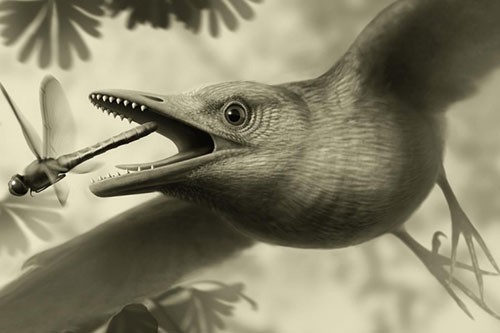Ancient bird fossils have been recovered, providing new insight and clues how these prehistoric avian creatures apparently flew over the heads of dinosaurs.
Scientists studied the extremely well preserved wing of an ancient bird dating back to 125 million years, that was recovered from Spain where they discovered how the complex arrangement of its muscles and ligaments were the key features that allowed birds to fly, similar to the manner how modern birds take flight today.
According to Luis M. Chiappe of the Natural History Museum of Los Angeles County, this anatomical match of this network of muscles that is clearly preserved in fossils, strongly suggest how the earliest birds in prehistoric times are already adapted for aerodynamic abilities, which is already seen in modern birds.
Researchers discovered that this muscle system from ancient birds is almost identical to the feature that specifically controls the fine wing adjustments of modern day birds, that allows birds to become masters of flight.
According to lead author of the study, Guillermo Navalón from the University of Bristol, this is such a surprising finding despite prehistoric birds possessing different skeletal systems compared to their modern counterparts but in their softer anatomy, the primitive birds have remarkable similarities with birds of today.
With these incredible wing muscle features, the ancient birds were able to fly and hover above heads of dinosaurs however, the precise flight systems they used remain unclear.
Chiappe adds that this new fossil provides a fresh glimpse to the wing anatomy of birds that lived among the biggest dinosaurs to ever walk the earth. Fossils like this are now allowing scientists to pinpoint the most intricate and complex aspects of the early evolution of flight among animals.
This new study is published in the journal, Scientific Reports.



























